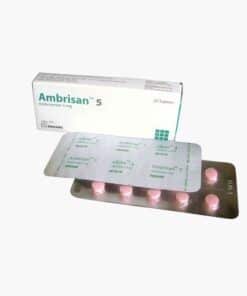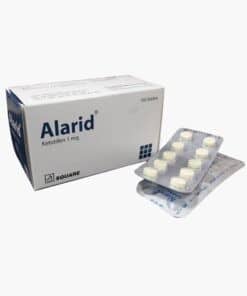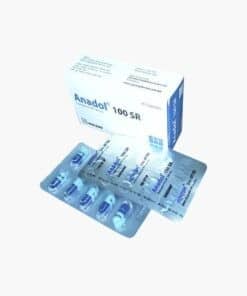Dytor 5 | Tablet | 10 pcs
৳ 110.00
Brand Name: Dytor 5 Tablet
Generic: Torasemide
5 mg
Manufacturer: D16 Pharma & Biotec
(Mfg. by: Unimed Unihealth MFG. Ltd.)
Unit Price: ৳ 11.00 (3 x 10: ৳ 330.00)
Strip Price: ৳ 110.00
Indications
Therapeutic Class
Pharmacology
Dosage & Administration
Congestive heart failure: The usual initial oral dose is 10 mg or 20 mg once daily. If the diuretic response is inadequate, the dose should be titrated upward by approximately doubling until the desired diuretic response is obtained. Single doses higher than 200 mg have not been adequately studied.
Chronic renal failure: The usual initial oral dose is 20 mg once daily. lf the diuretic response is inadequate, the dose should be titrated upward by approximately doubling until the desired diuretic response is obtained. Single doses higher than 200mg have not been adequately studied.
Hepatic cirrhosis: The usual initial oral dose is 5 mg or 10 mg once daily, administered together with an aldosterone antagonist or a potassium sparing diuretic. If the diuretic response is inadequate, the dose should be titrated upward by approximately doubling until the desired diuretic response is obtained. Single doses higher than 40 mg have not been adequately studied. Chronic use of any diuretic in hepatic disease has not been studied in adequate and well-controlled trials.
Hypertension: The usual initial oral dose is 2.5-5 mg once daily. If the 5 mg dose does not provide adequate reduction of blood pressure within 4 to 6 weeks, the dose may be increased to 10 mg once daily. If the response to 10 mg is insufficient, an additional antihypertensive should be added to the treatment regimen.
Interaction
Contraindications
Side Effects
Pregnancy & Lactation
Pregnancy: Adequate and well controlled studies of torasemide have not been carried out in pregnant woman. Because animal reproduction studies are not always predictive of human response, torasemide can be used during pregnancy only if clearly needed.
Nursing Mother: lt is not known whether torasemide is excreted in human milk. Because many drugs are excreted in human milk, caution should be exercised when torasemide is administered to a nursing mother.
Precautions & Warnings
Use in Special Populations
Overdose Effects
Storage Conditions
| Generic Name | Torasemide |
|---|---|
| Size | 5 mg |
Only logged in customers who have purchased this product may leave a review.











Reviews
There are no reviews yet.